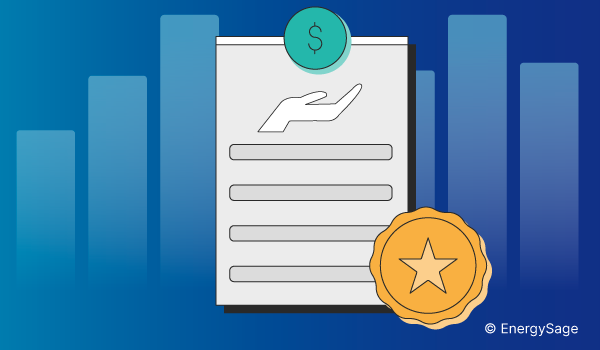EnergySage industry data shows that most solar loans are typically paid off in seven to nine years – this may be because a homeowner sells their home, refinances, or pays off the loan within that period. With this in mind, some homeowners choose a longer loan term to keep their monthly expenses low and pay off the loan when they have capital available (you’ll want to know if your lender charges a prepayment penalty before taking this approach – read more on that later).
It’s also important to remember that you’re eligible to receive the federal solar tax credit after you install your solar system, which will be 30 percent of your solar system’s total cost. If you use your solar tax credit to pay off some of your loan’s principal, you’ll have even less to pay in the long run! Some loans are structured to consider this and adjust your payment amounts based on when you are receiving your benefit from the tax credit. You may see changes in the monthly charge. If not, you can use the lump sum from the tax credit to pay off a large portion of your loan’s principal.
Should you choose the loan with the lowest interest?
Different lenders offer different interest rates, and If you’ve shopped for a loan for your home or car before, your eye may be trained to seek out the option with the lowest interest rate. However, while shopping for solar loans, it’s important to consider all the features discussed above – not just the interest rate – to ensure you get the best deal and the loan that works best for you.
Solar lenders sometimes use initiation or dealer fees to subsidize artificially low-interest rates for their loan products. In other words, they can charge lower interest because they charge higher fees upfront.
Dealer fees can be as high as 30 percent and are often hidden in the financed price of the loan (be sure to inspect your quotes and ask installers about differences in cash and financed prices). So even if your interest rate is low, you’ll be paying 30 percent more for your solar panel system, negating any benefit you may expect from selecting a loan with a lower interest rate. We encourage you to consider the total cost of ownership of your solar panels rather than using interest rates alone to evaluate your loan options. A loan with no dealer fee may have a higher interest rate. Still, in most cases, you’ll pay less for your panels overall if you select this option, mainly because solar loans are not usually held for the entire loan term (remember, most homeowners pay off their loans in seven to nine years).
Read the full article here














